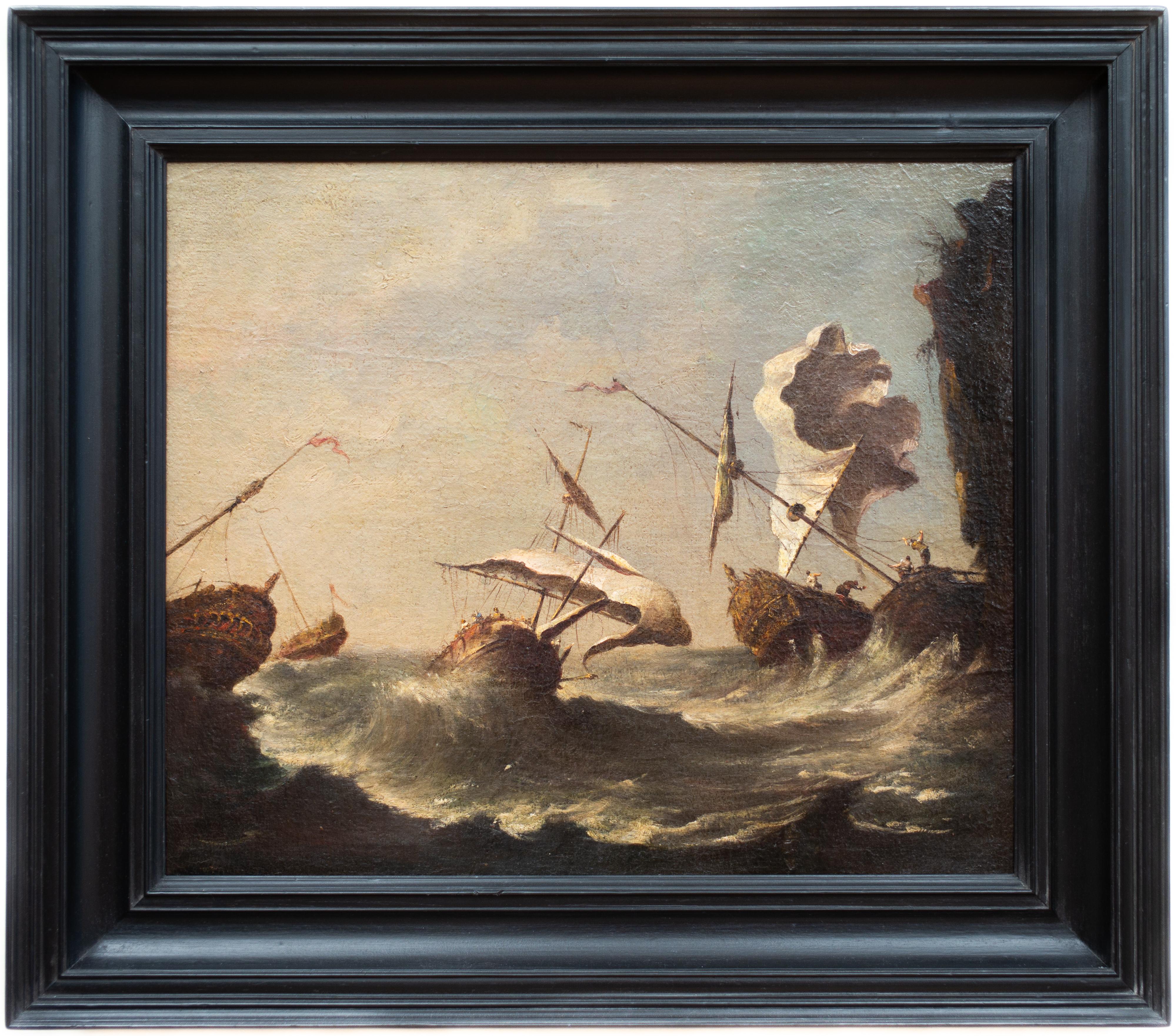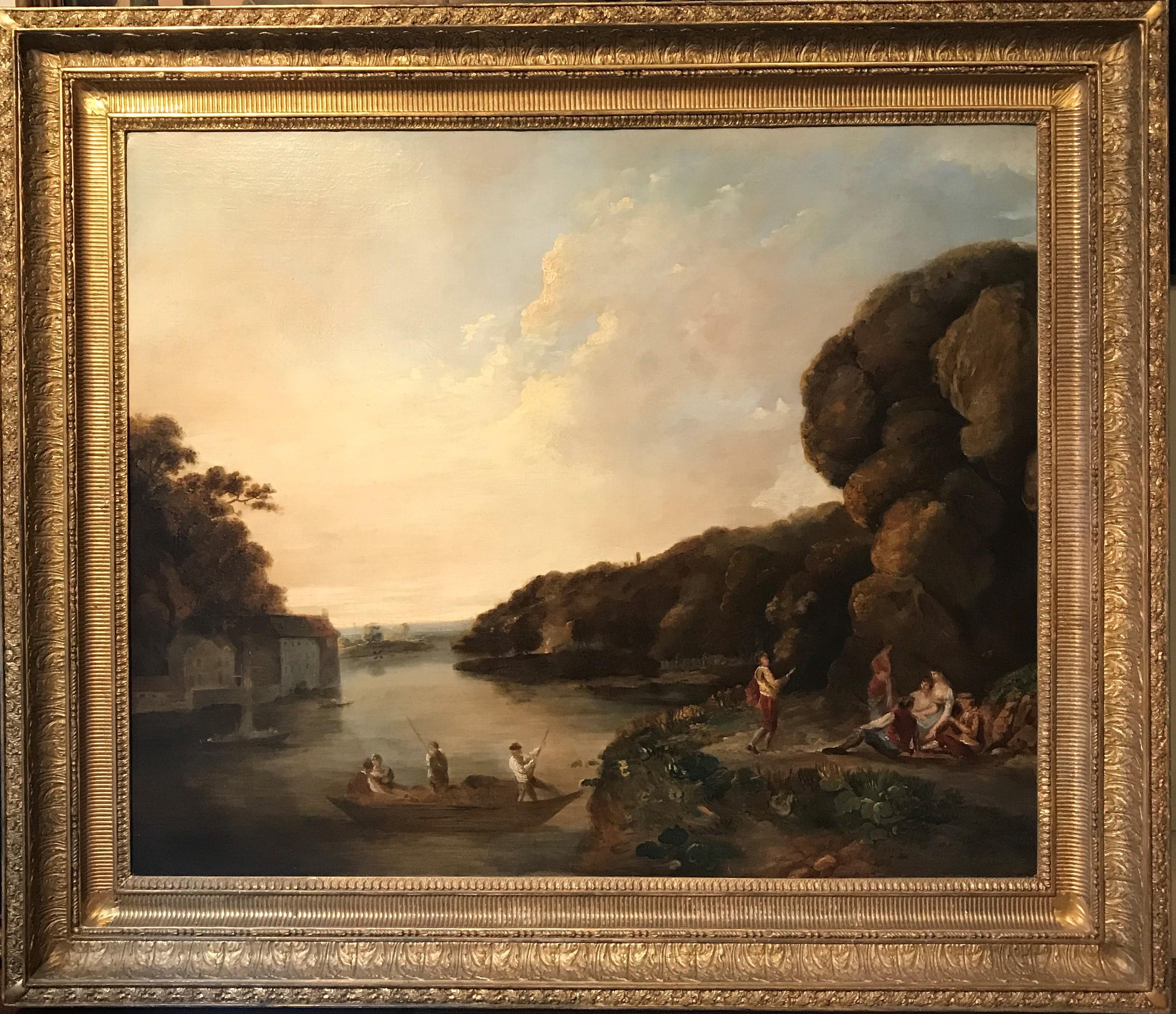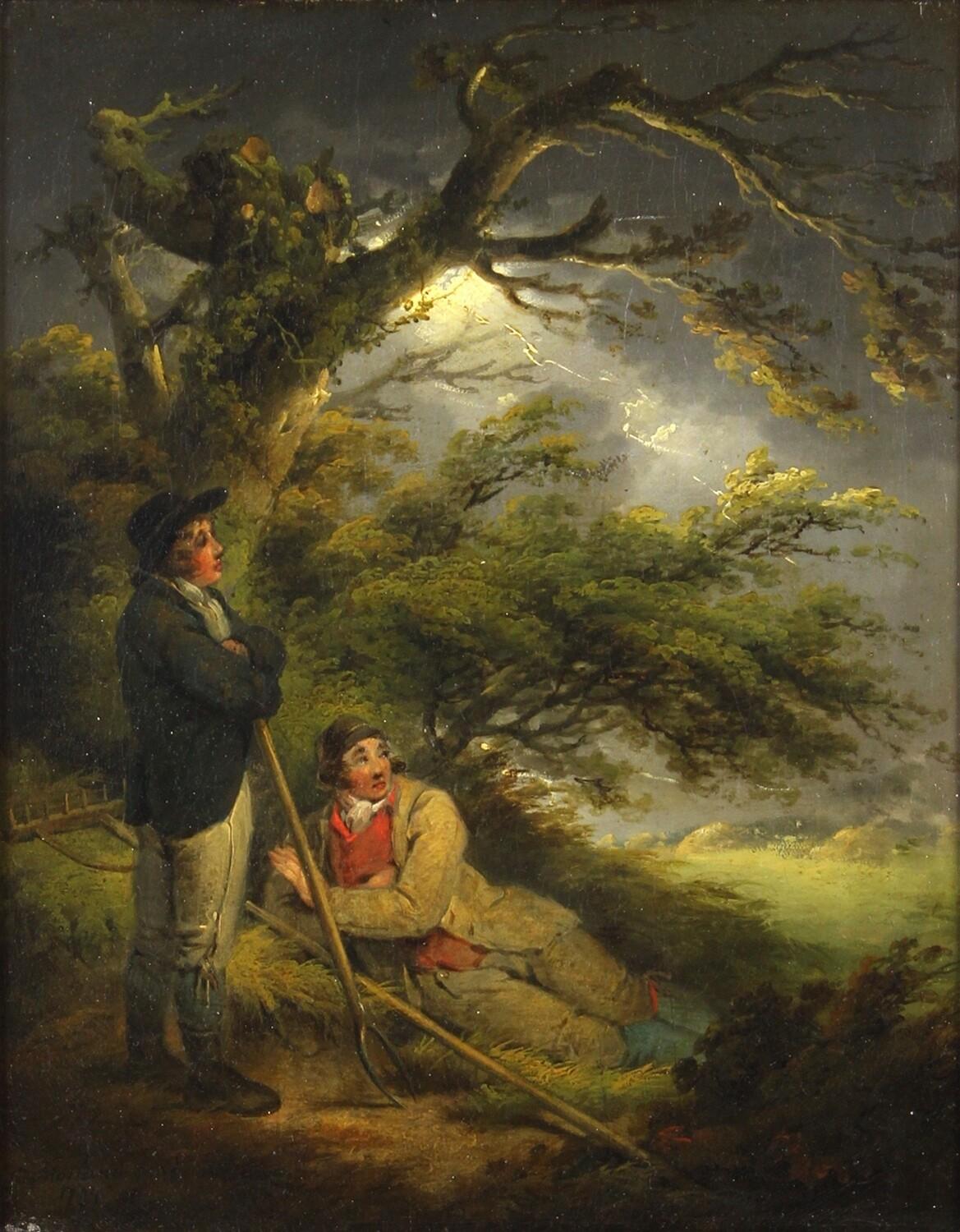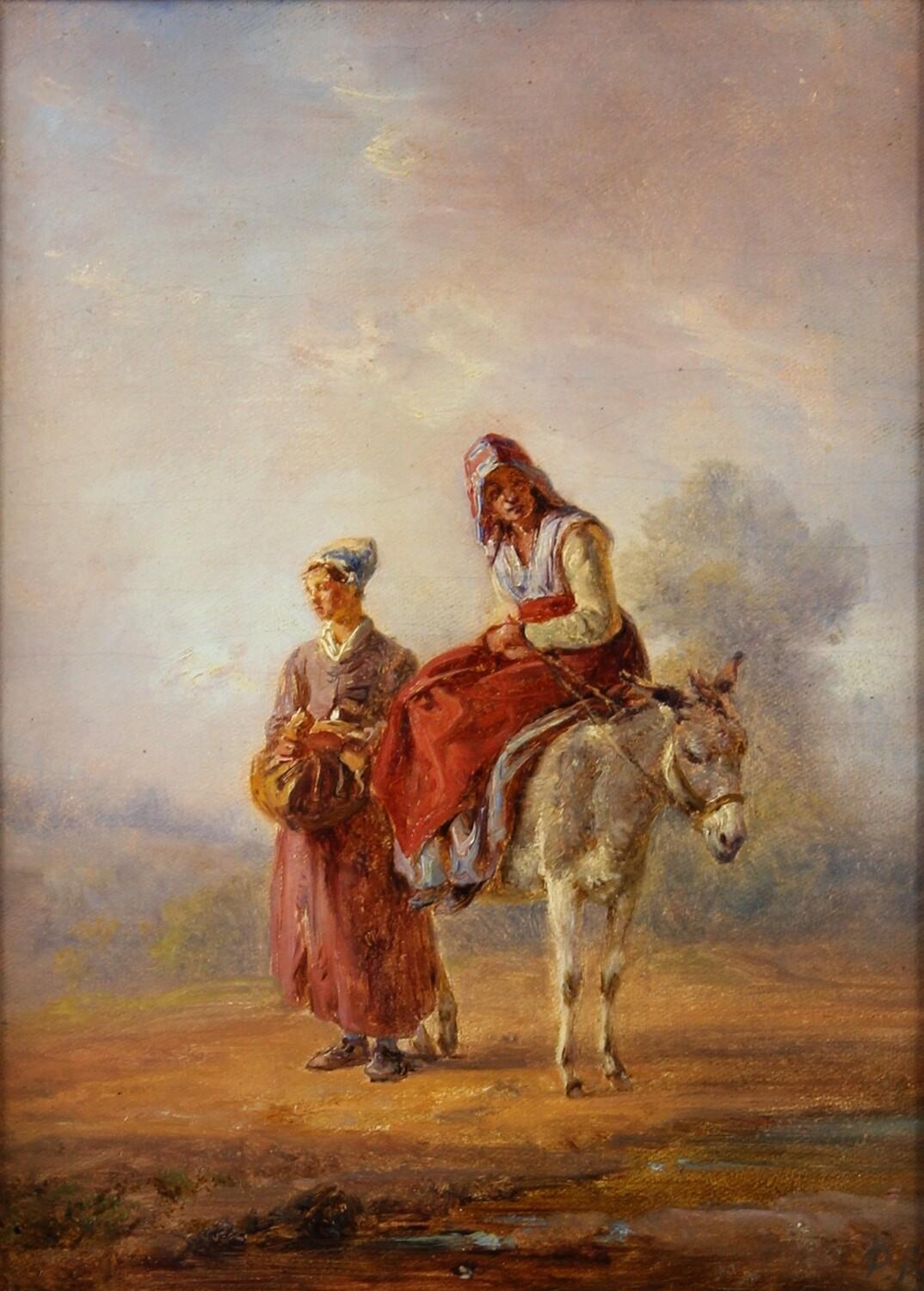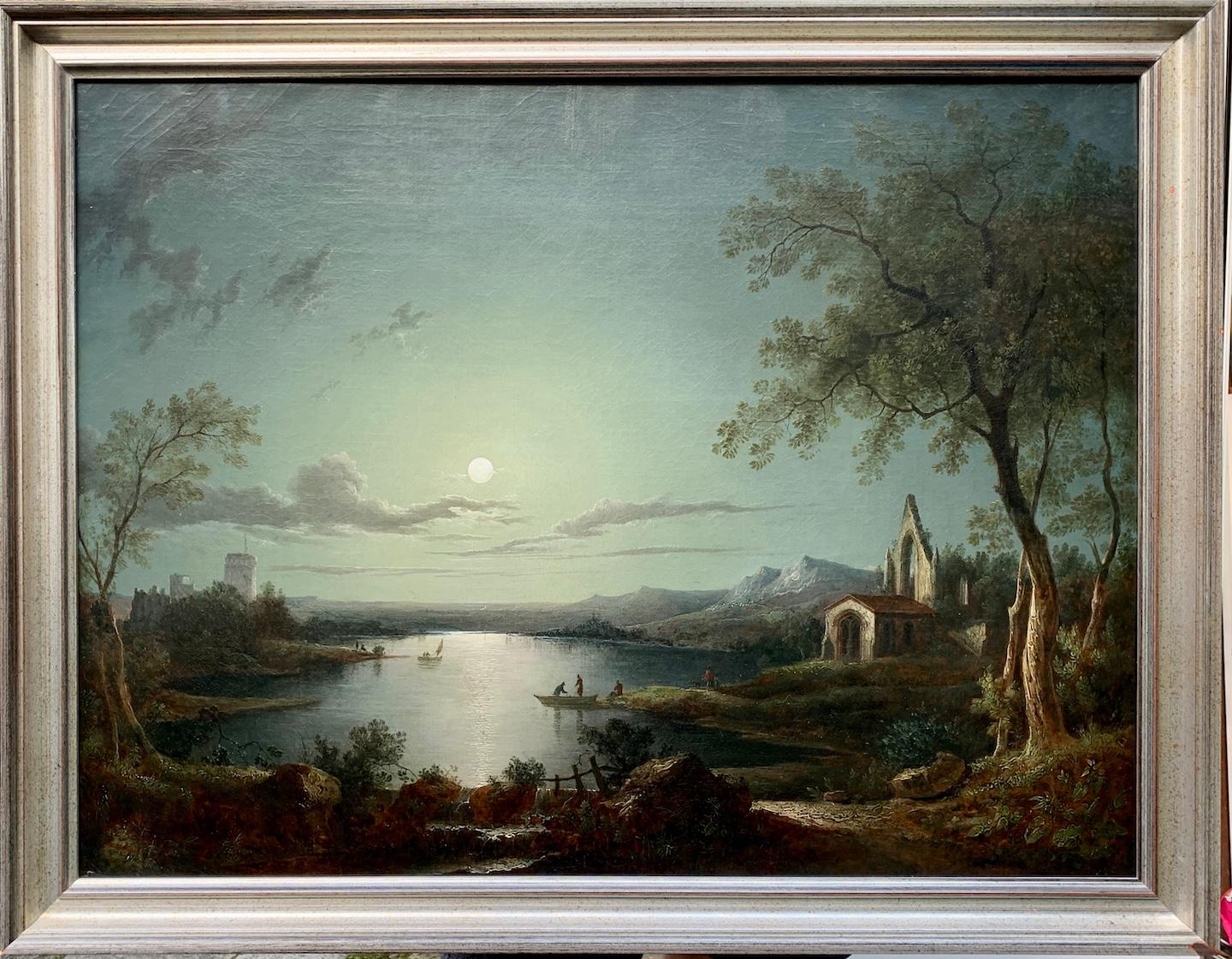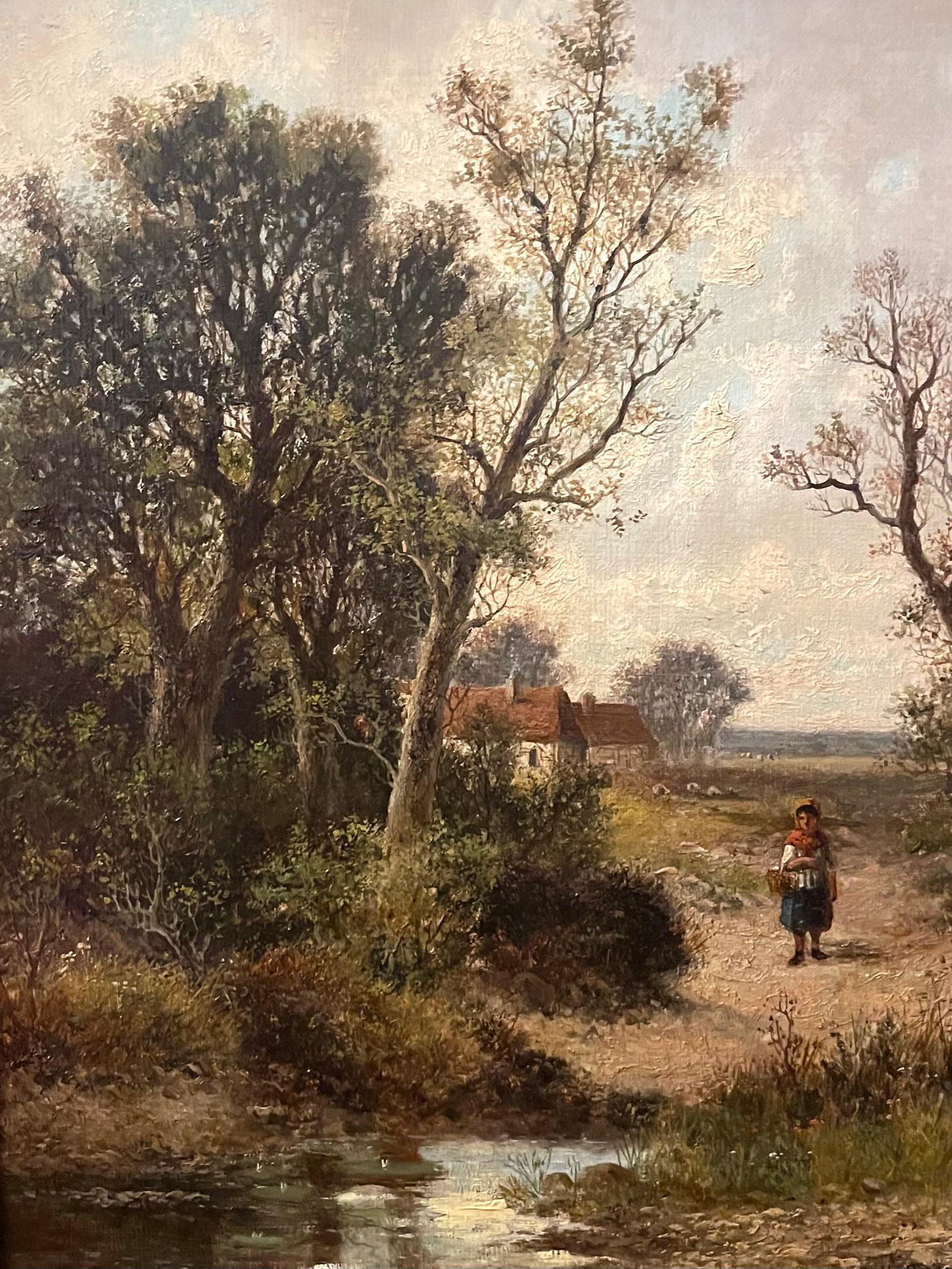Items Similar to 18-19th century Italian figure painting - River landscape - Oil on canvas Italy
Video Loading
Want more images or videos?
Request additional images or videos from the seller
1 of 20
Unknown18-19th century Italian figure painting - River landscape - Oil on canvas Italy1800
1800
About the Item
Italian painter (XVIII-XIX century) - River landscape with ruins.
76 x 97 cm without frame, 85 x 106 cm with frame.
Oil on canvas, in a gilded wooden frame.
Condition report: Painting subjected to relining. Good state of conservation of the pictorial surface.
- All shipments are free and professionally packed.
- This item is sold with a certificate of authenticity with legal validity.
*Please keep in mind that this work has not yet obtained the certificate of free export from Italy from the Superintendence of Cultural Heritage. This document certifies that the work is not part of the Italian cultural heritage. Normally the times for issuing certificates are 40 days from the date of the appointment: The new legislation in force from 2021 provides for shorter times at the discretion of the expert commission for declared amounts of less than € 13,500. All costs of this operation are included.
- Creation Year:1800
- Dimensions:Height: 33.47 in (85 cm)Width: 41.74 in (106 cm)
- Medium:
- Movement & Style:
- Period:
- Framing:Frame IncludedFraming Options Available
- Condition:Please note that any damage or breakage of the antiques in our collection will be restored at the time of sale upon request.
- Gallery Location:Varmo, IT
- Reference Number:1stDibs: LU886310915902
About the Seller
5.0
Platinum Seller
These expertly vetted sellers are 1stDibs' most experienced sellers and are rated highest by our customers.
Established in 2001
1stDibs seller since 2018
141 sales on 1stDibs
Typical response time: 1 hour
More From This SellerView All
- Antique Roman painter - 18th century landscape painting - Wanderers - ItalyLocated in Varmo, ITRoman painter (18th century) - Landscape with wayfarers. 43.5 x 34.5 cm without frame, 58.5 x 49.5 cm with frame. Antique oil painting on canvas, in carved and gilded wooden frame....Category
Early 18th Century Old Masters Figurative Paintings
MaterialsCanvas, Oil
- Follower of Pietro da Cortona- 18th-19th century painting - Venus Aeneas - ItalyLocated in Varmo, ITFollower of Pietro da Cortona (18th-19th century) - Venus appears to Aeneas as a huntress. 50 x 60 cm without frame, 80.5 x 90 cm with frame. Antique oil painting on canvas, in a c...Category
Late 18th Century Old Masters Landscape Paintings
MaterialsCanvas, Oil
- Antique battle painter - 17th century figure painting Battle KnightBy Jacques CourtoisLocated in Varmo, ITJacques Courtois, known as il Borgognone (Saint-Hyppolite 1621 - Rome 1676) circle of - Battaglia. 53 x 80 cm without frame, 73.5 x 97.5 cm with frame. Antique oil painting on canv...Category
Late 17th Century Old Masters Landscape Paintings
MaterialsOil, Canvas
- Vedustist painter (Veneto school) - 19th century landscape painting - PadovaLocated in Varmo, ITVenetian painter (19th century) - Padua, Caffè Pedrocchi. 37.5 x 48.5 cm without frame, 50.5 x 60 cm with frame. Oil on canvas, in a carved wooden frame. Condition report: Good st...Category
Early 19th Century Old Masters Landscape Paintings
MaterialsCanvas, Oil
- Vedustist painter (Veneto school) - 19th century landscape painting - PadovaLocated in Varmo, ITVenetian painter (19th century) - Padua, Porta Liviana. 37.5 x 48.5 cm without frame, 50.5 x 60 cm with frame. Oil on canvas, in a carved wooden frame. Condition report: Good stat...Category
Early 19th Century Old Masters Landscape Paintings
MaterialsCanvas, Oil
- Christian Reder (Italy) - 18th century Italian landscape painting - SoldiersBy Christian Reder (Monsù Leandro)Located in Varmo, ITChristian Reder (Leipzig 1656 - Rome 1729) - The departure of the soldiers from the fort. 57.5 x 108.5 cm without frame, 89 x 122 cm with frame. Antique oil painting on canvas, in ...Category
Early 18th Century Old Masters Landscape Paintings
MaterialsCanvas, Oil
You May Also Like
- Shipping in Stormy Waters, Attributed to Italian Artist Francesco GuardiBy Francesco GuardiLocated in Stockholm, SEThe splendour of the tragic sea Francesco Guardi and maritime painting in Venetian art No Venetian painter was a stranger to the sea. After all, Venice was not only one of the most prominent ports of the Mediterranean, but indeed a city literally submerged in the ocean from time to time. Curiously however, the famous Venetian school of painting showed little interest in maritime motifs, favouring scenes from the iconic architecture of the city rather than seascapes. That is why this painting is a particularly interesting window into not only the painter Francesco Guardi himself – but to the significance of the element of water in art history, in absence as well as in the centre of attention. Whether it be calm, sunny days with stunning views of the palaces alongside the canals of Venice or – more rarely – stormy shipwrecking tragedies at sea, water as a unifying element is integral to the works of painter Francesco Guardi (1712–1793). During his lifetime, Venetian art saw many of its greatest triumphs with names like Tiepolo or Canaletto gaining international recognition and firmly establishing Venice as one of the most vibrant artistic communities of Europe. While the city itself already in the 18th century was something of an early tourist spot where aristocrats and high society visited on their grand tour or travels, the artists too contributed to the fame and their work spread the image of Venice as the city of romance and leisure to an international audience, many of whom could never visit in person. Still today, the iconic image of Venice with its whimsical array of palaces, churches and other historic buildings is much influenced by these artists, many of whom have stood the test of time like very well and remain some of the most beloved in all of art history. It was not primarily subtility, intellectual meanings or moral ideals that the Venetian art tried to capture; instead it was the sheer vibrancy of life and the fast-paced city with crumbling palaces and festive people that made this atmosphere so special. Of course, Venice could count painters in most genres among its residents, from portraiture to religious motifs, history painting and much else. Still, it is the Vedutas and views of the city that seems to have etched itself into our memory more than anything else, not least in the tradition of Canaletto who was perhaps the undisputed master of all Venetian painters. Born into his profession, Francesco lived and breathed painting all his life. His father, the painter Domenico Guardi (1678–1716) died when Francesco was just a small child, yet both he and his brothers Niccolò and Gian Antonio continued in their fathers’ footsteps. The Guardi family belonged to the nobility and originated from the mountainous area of Trentino, not far from the Alps. The brothers worked together on more challenging commissions and supported each other in the manner typical of family workshops or networks of artists. Their sister Maria Cecilia married no other than the artist Giovanni Battista Tiepolo himself, linking the family to the most renowned Venetian name of the time. During almost a decade, Guardi worked in the studio of Michele Giovanni Marieschi, sometimes simply known as Michiel, a painted similar in both style and motif. Canaletto is, however, the artist Guardi is most often compared to since they shared a mutual fascination for depicting the architecture and cityscape of Venice. During the course of his career, Guardi tried his hand in many different genres. He was as swift in painting landscapes, Vedutas of Venice, sacred motifs, interiors and architectural compositions as he was in a number of other motifs. His style is typical of the Venetian school but also distinct and personal once we look a little closer. There is an absolute certainty in the composition, the choice of which sometimes feels like that of a carefully calculated photograph – yet it is also very painterly, in the best sense of the word: fluid, bold, sensitive and full of character. The brushwork is rapid, intense, seemingly careless and extraordinarily minute at the same time; fresh and planned in a very enjoyable mixture. His interiors often capture the breath-taking spacious glamour of the palaces and all their exquisite decor. He usually constructed the motif through remarkably simple, almost spontaneous yet intuitively precise strokes and shapes. The result was a festive, high-spirited atmospheric quality, far away from the sterile and exact likeness that other painters fell victim to when trying to copy Canaletto. The painting here has nothing of the city of Venice in it. On the contrary, we seem to be transported far away into the solitary ocean, with no architecture, nothing to hold on to – only the roaring sea and the dangerous cliffs upon which the ships are just moments away from being crushed upon. It is a maritime composition evoking both Flemish and Italian precursors, in the proud tradition of maritime painting that for centuries formed a crucial part of our visual culture. This genre of painting is today curiously overlooked, compared to how esteemed and meaningful it was when our relationship to the sea was far more natural than it is today. When both people and goods travelled by water, and many nations and cities – Venice among them – depended entirely on sea fare, the existential connection to the ocean was much more natural and integrated into the imagination. The schools and traditions of maritime art are as manifold as there are countries connected to the sea, and all reflect the need to process the dangers and wonders of the ocean. It could symbolize opportunity, the exciting prospects of a new countries and adventures, prospering trade, beautiful scenery as well as war and tragedy, loss of life, danger and doom. To say that water is ambivalent in nature is an understatement, and these many layers were something that artists explored in the most wondrous ways. Perhaps it takes a bit more time for the modern eye to identify the different nuances and qualities of historic maritime paintings, they may on first impression seem hard to differentiate from each other. But when allowing these motifs to unfold and tell stories of the sea in both fiction and reality – or somewhere in between – we are awarded with an understanding of how the oceans truly built our world. In Guardi’s interpretation, we see an almost theatrically arranged shipwrecking scene. No less than five ships are depicted right in the moment of utter disaster. Caught in a violent storm, the waves have driven them to a shore of sharp cliffs and if not swallowed by the waves, crushing against the cliffs seems to be the only outcome. The large wooden ships are impressively decorated with elaborate sculpture, and in fact relics already during Guardi’s lifetime. They are in fact typical of Dutch and Flemish 17th century ships, giving us a clue to where he got the inspiration from. Guardi must have seen examples of Flemish maritime art, that made him curious about these particular motifs. One is reminded of Flemish painters like Willem van de Velde and Ludolf Backhuysen, and this very painting has indeed been mistakenly attributed to Matthieu van Plattenberg...Category
18th Century Old Masters Landscape Paintings
MaterialsCanvas, Oil
- 18th Century English Oil Landscape Painting: Elegant Figures alongside River WyeBy Attributed to William MarlowLocated in London, GBAttributed to William Marlow (English, 1740-1813) Elegant Figures alongside the River Wye 1790 131 x 152 cm, inc. frame This quiet bucolic scene shows figur...Category
Late 18th Century Old Masters Figurative Paintings
MaterialsCanvas, Oil
- Sheltering from the storm - Romantic landscape illuminated by lightning bolt -By George MorlandLocated in Berlin, DEGeorge Morland (1763 London - 1804 Brighton). Sheltering from the Storm. Oil on canvas, relined, 37.5 x 29.5 cm (visible size), 53.5 x 45.5 cm (frame), signed and dated at lower left...Category
1790s Old Masters Landscape Paintings
MaterialsCanvas, Oil
- Two countrywomen with a donkey - Melancholy in an atmosphere of colour -Located in Berlin, DEPierre Louis De La Rive (1753 Geneva - 1817 Geneva). Two countrywomen with a donkey. Oil on canvas, mounted, 27 x 20 cm (visible size), 37 x 31 (frame), monogrammed "P.R." at lower right. About the artwork De La Rive has taken the typical scenes of Dutch landscape genre paintings...Category
1790s Old Masters Figurative Paintings
MaterialsCanvas, Oil
- Late 18th century Antique English Moonlight over a lake and church landscapeBy Henry PetherLocated in Woodbury, CTHenry Pether, late 18th-century Moonlight lake Landscape. Born into a family of artists, Henry was the son of Abraham Pether (1756-1812), a talented la...Category
1790s Old Masters Landscape Paintings
MaterialsCanvas, Oil
- Landscape Near Felday, SurreyBy Abraham Hulk the YoungerLocated in Hillsborough, NCDutch/English artist Abraham Hulk the Younger (1851-1922) is most known for landscapes of the British countryside. This work is one of a pair (the second work is also available by s...Category
Late 19th Century Old Masters Landscape Paintings
MaterialsCanvas, Oil
